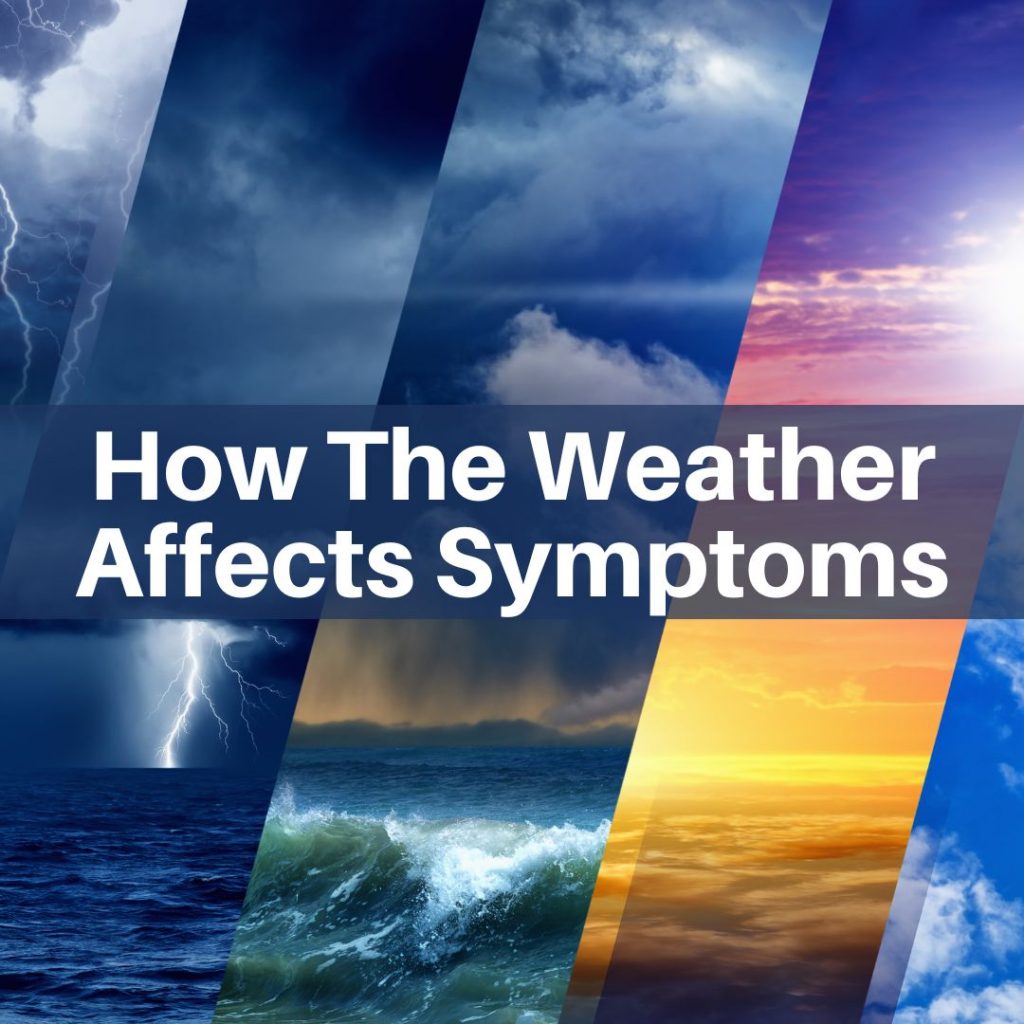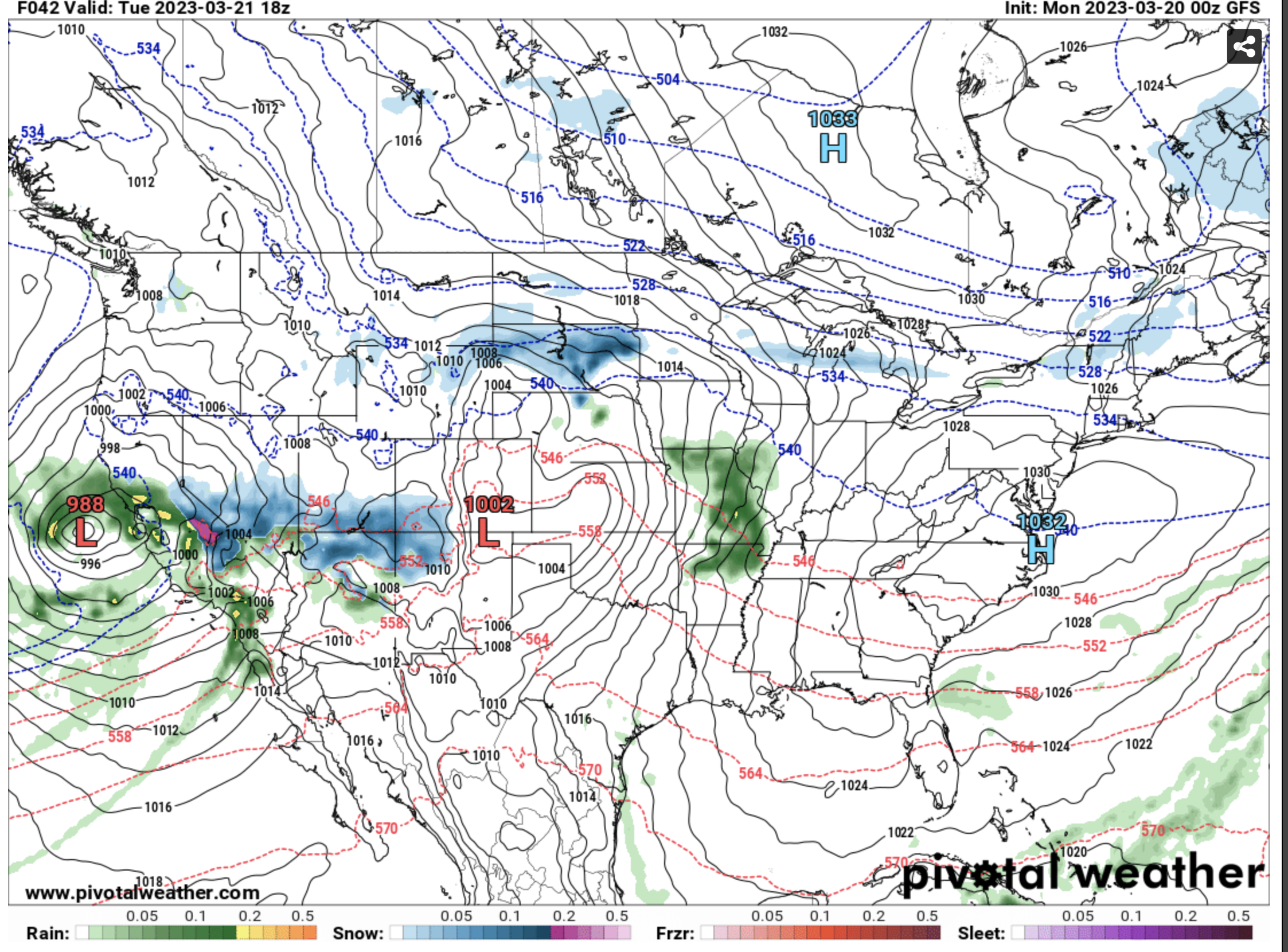Severe weather can worsen mast cell activation syndrome

It’s a fact, weather changes are a common trigger for patients with chronic illness and mast cell activation syndrome (MCAS).
As many of you know, I live in California. If you’ve been watching the news, you know this winter has been one for the record books in my state. And many people I know are complaining of worsening symptoms.
Rapid changes in the weather can have a significant impact on the functioning of mast cells. These changes can lead to an increase in the release of inflammatory mediators, alter the ability of mast cells to respond to allergens and pathogens, and affect the migration of mast cells in the body.
Let me explain.
The human body is made up of about 60% fluids. This percentage can vary depending on factors such as age, sex, and body style. For example, men tend to have a higher percentage of water in their bodies than women and younger people have a higher percentage than older individuals.
As you know, water is essential for many bodily functions, including regulating blood pressure and body temperature, transporting nutrients to cells, and removing waste products from the body.
Atmospheric pressure
Water is also affected by atmospheric pressure. For example, water at sea level boils at 212ºF versus water at an elevation of 5,000 feet boils at 202ºF. The difference in boiling temperatures is solely due to the lower atmospheric pressure at higher elevations.
Mast cells are a type of immune cell that plays a crucial role in the body’s immune response to pathogens and allergens. These cells are found throughout every system of the body, including the skin, lungs, organs, bone marrow and digestive system. Mast cells contain granules that are filled with mediators, such as histamine, cytokines and proteases.
When mast cells are working properly, they are our friends. When mast cells become overactive, they release too many mediators into the surrounding tissues, causing inflammation and other immune responses.
Barometric pressure is the force exerted by the weight of the molecules in the Earth’s atmosphere on to the surface of the planet. This atmospheric pressure is measured in units of millibars (mb), kilopascals (kPa), or inches of mercury (inHg.)
Generally, barometric pressure can be classified as low, medium, or high based on the following ranges:
- Low barometric pressure: below 1000 mb or 29.53 inHg
- Medium barometric pressure: between 1000 mb and 1013 mb, or between 29.53 inHg and 30.00 inHg
- High barometric pressure: above 1013 mb or 30.00 inHg
A storm is caused by the movement of air masses with different temperatures and pressures. When these air masses collide, they create instability in the atmosphere, which can lead to rain, thunderstorms, and more severe weather conditions like hurricanes or tornadoes. And, yes, many of us can feel these weather changes.
Feeling changes in the weather
In general, the lower the barometric pressure, the stronger the storm is likely to be. As a low-pressure system moves closer to the ground, it causes a drop in atmospheric pressure at the surface. This drop in pressure can be detected by barometers, which are instruments used to measure air pressure.
People can also feel the effects of a drop in pressure, such as a feeling of heaviness in the air. Most people are familiar with their ears or sinuses popping as the pressure changes in an airplane.
You might remember a grandparent who would complain about body aches when a storm was moving in. These changes in atmospheric pressure can have various effects on the body, including headaches, joint pain, changes in mood (depression, anxiety), partly due to an increase in mast cell activation.
When the barometric pressure drops, such as before a storm, the decrease in pressure can cause the release of histamine from mast cells. Mast cells also have receptors on their surface that detect changes in their environment, such as changes in temperature, humidity, and pressure. When any of these factors change rapidly, it can alter the signaling pathways in mast cells, making them more reactive. This can lead to an increase in the release of inflammatory mediators and an exacerbation of symptoms.
Mast cells are also designed to migrate to sites of inflammation and injury, where they release mediators and promote healing. Changes in barometric pressure can affect the distribution of mast cells, causing them to accumulate in certain tissues and organs. This can lead to an increase in inflammation, swelling and tissue damage in those areas.
I can’t tell you how many MCAS patients have told me how sick they got after a drive over a mountain range. I didn’t put two and two together until I realized that the air pressure is lower at higher elevations and a rapid change can trigger mast cells.
More pain
As the Arthritis Foundation states, “There’s no denying it, weather and climate can have a significant effect on arthritis and painful joints.” Even simple weather changes can cause the fluid-rich tissues around joints to expand or contract. This can put pressure on the nerves in the joint, leading to pain and discomfort. For example, when the barometric pressure drops before a storm, the tissues in the joint expand, which can lead to increased pain and tenderness.
Cold temperatures on their own can cause the joint fluids to thicken, leading to stiffness, while high humidity can cause tissues around the joint to swell leading to more discomfort.
If you know a storm is coming it’s always best to be prepared. Not just food and candles, but it also might be a good time to talk to your doctor about adjusting your medications accordingly. You might also try some of these 12 pain management tools I’ve put together to help manage your chronic pain.
The weather app on my cell phone shows barometric pressure in inches of mercury (inHg). A more detailed website I like to use is called Pivotal Weather. If you click on “Satellite” on the top bar, Model > “GFS”; Zoom > “Continental US”; Animation > “Forecast loop” you will be able to see any upcoming storms in your area.
In this image you can see we have an extremely low pressure of 988 forecast to hit California on the first day of Spring—no kidding.
Forewarned is forearmed
Being able to see the forecast may help some people to know when to ramp up their medications or adjust their schedule knowing they likely won’t feel great when this storm hits.
In short, NO, you are not crazy. Changes in the weather can make you feel worse. People with arthritis, migraines, MS, lupus, Lyme disease, long COVID–pretty much any chronic illness–may experience a worsening of symptoms due to changes in temperature, humidity, barometric pressure and precipitation.
Knowing how to check the weather and when to adjust your medications and/or activities may help you literally weather the next storm.
See also:
About: Mast Cell Activation Syndrome
LymeSci: Mast Cell Activation and Lyme
The Mast Cell Disease Society: Symptoms and Triggers of MCAS
LymeSci is written by Lonnie Marcum, a Licensed Physical Therapist and mother of a daughter with Lyme. She served two terms on a subcommittee of the federal Tick-Borne Disease Working Group. Follow her on Twitter: @LonnieRhea Email her at: lmarcum@lymedisease.org.
References
Theoharides TC, Tsilioni I, Ren H. Recent advances in our understanding of mast cell activation – or should it be mast cell mediator disorders? Expert Rev Clin Immunol. 2019 Jun;15(6):639-656. doi: 10.1080/1744666X.2019.1596800. Epub 2019 Apr 22. PMID: 30884251; PMCID: PMC7003574.





















We invite you to comment on our Facebook page.
Visit LymeDisease.org Facebook Page